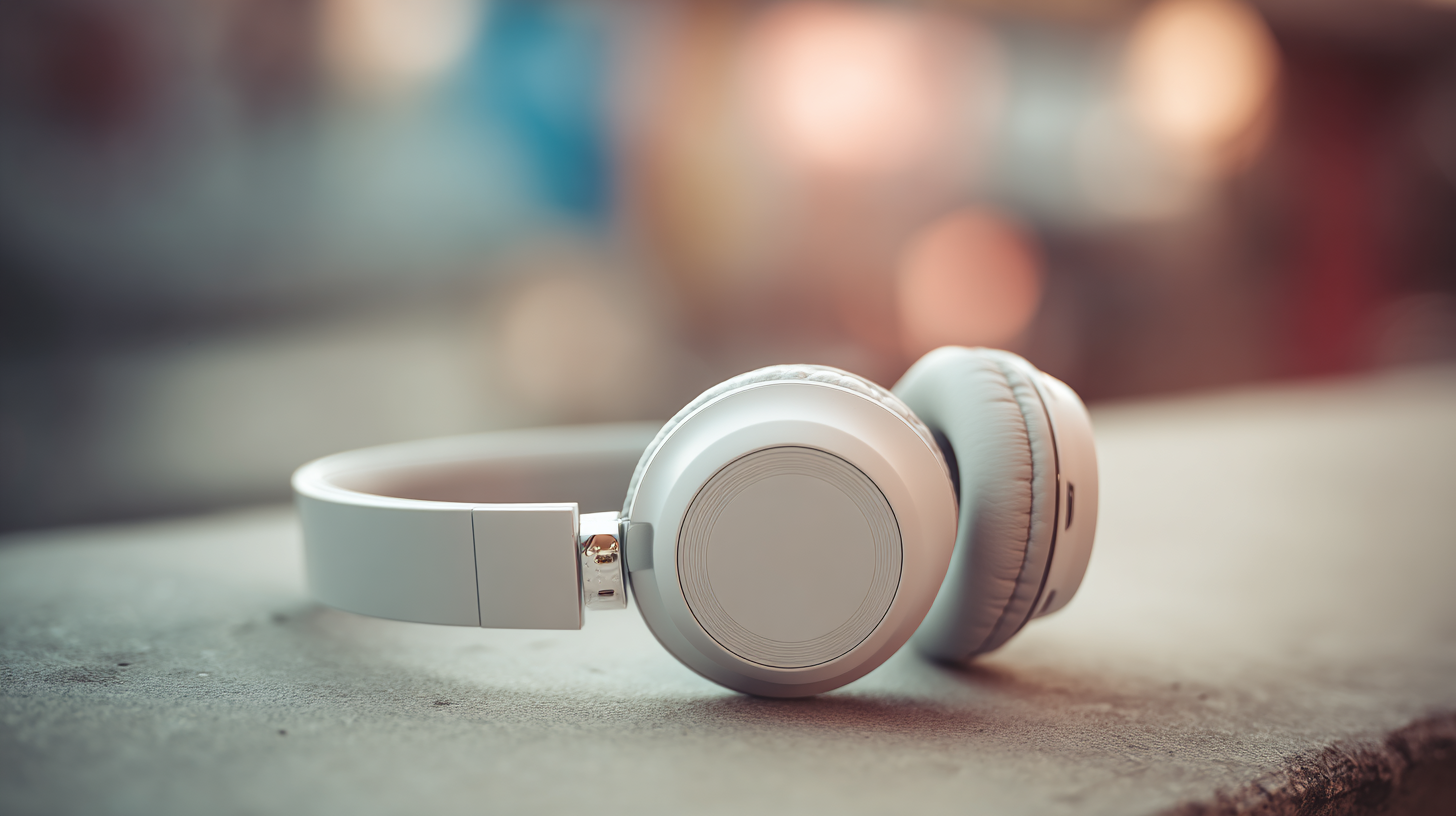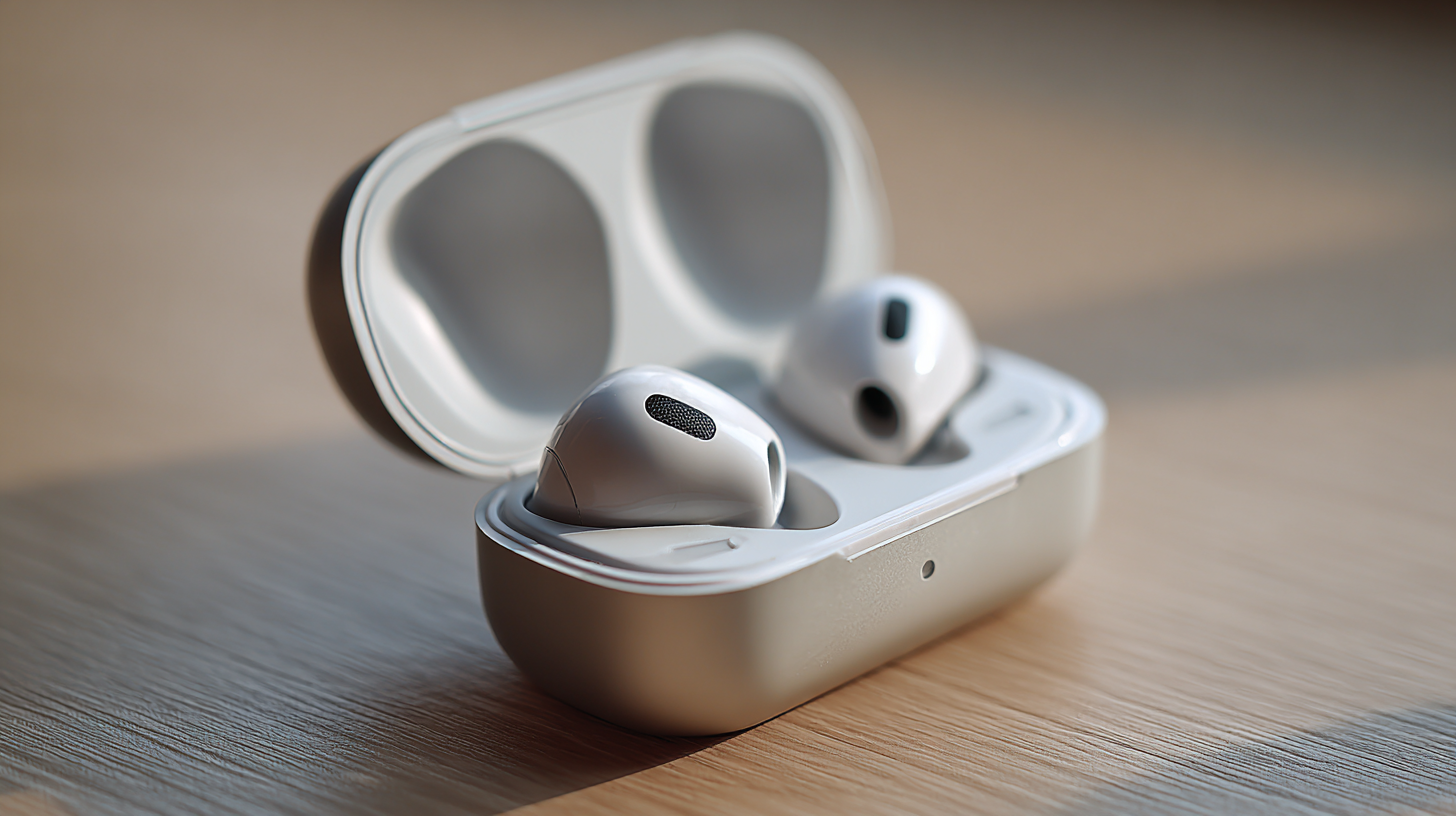Leave Your Message
-
Phone
-
E-mail
-
Whatsapp
As we venture into 2025, the landscape of technology continues to evolve at an unprecedented pace, particularly in the realm of Wireless Bluetooth Headsets. These devices have become essential tools for communication, entertainment, and productivity in our increasingly digital world. With advancements in audio quality, battery life, and connectivity, manufacturers are focusing on creating headsets that not only meet the demands of consumers but also enhance their listening experiences. As China positions itself as a formidable force in manufacturing, the global market for Wireless Bluetooth Headsets is set to witness innovation that caters to diverse needs and preferences. This blog will explore the key technology trends influencing the future of these headsets, along with winning strategies that companies can adopt to thrive in a competitive landscape.

As we look towards 2025, the evolution of Bluetooth audio technologies is set to redefine user experiences significantly. According to a recent report from MarketsandMarkets, the global Bluetooth market is projected to reach $75 billion by 2025, driven largely by innovations in wireless audio devices. These advancements are not only enhancing sound quality but are also integrating advanced features like voice assistant capabilities and noise cancellation, making Bluetooth headsets more versatile than ever.
Emerging technologies such as aptX Adaptive and LC3 (Low Complexity Communication Codec) are revolutionizing the way consumers listen to audio. The adoption of these codecs allows for high-resolution audio streaming over Bluetooth, improving sound fidelity and reducing latency, which is crucial for gamers and audiophiles alike. In fact, a study by Grand View Research indicates that nearly 60% of users prioritize audio quality and latency when selecting their wireless headsets. This shift in consumer preferences highlights the need for manufacturers to focus on delivering superior audio experiences to remain competitive in a rapidly evolving market. As we approach 2025, these technological advancements are not just shaping the product landscape; they are fundamentally altering how we interact with our audio solutions daily.
As we approach 2025, the demand for versatile wireless Bluetooth headsets continues to rise, driven by advancements in sound quality and user experience. Key features to look for in the best wireless headsets of the future include enhanced active noise cancellation (ANC), intuitive touch controls, and extended battery life. According to a recent report from Grand View Research, the global market for Bluetooth audio devices is expected to grow at a CAGR of 20.3% from 2022 to 2030, emphasizing the importance of these innovations.
One critical aspect is the integration of smart technology into wireless headsets. Features such as voice assistants and adaptive sound adjustment are becoming mainstream, allowing users to personalize their listening experience seamlessly. A study by Markets and Markets highlights that 55% of consumers prioritize headset comfort and usability, indicating that ergonomic design will be a focal point for manufacturers.
Tip: When shopping for wireless headsets in 2025, prioritize models that offer customizable sound profiles and good battery life, with at least 30 hours of playback time on a single charge. This ensures an immersive listening experience without frequent interruptions. Also, look for headsets with fast charging capabilities, allowing you to quickly top up your battery whenever needed.
The future of Bluetooth headsets is being revolutionized by advancements in AI and machine learning, which are continuously redefining sound quality. These technologies enable headsets to analyze and adapt audio settings in real-time based on the listener’s environment and preferences. For example, AI can enhance voice clarity during calls by reducing background noise autonomously, ensuring crystal clear communication even in crowded spaces.
When choosing a Bluetooth headset in this evolving landscape, consider headphones that leverage machine learning for sound optimization. Look for models that offer customizable sound profiles, automatically adjusting frequencies to match individual hearing abilities. Additionally, ensure the headset has features like adaptive noise cancellation, which adjusts based on the ambient sound levels, providing an immersive listening experience tailored to your surroundings.
For an unbeatable experience, be proactive in updating your headset’s firmware. Manufacturers often release updates that enhance AI capabilities and sound quality, so staying updated ensures you benefit from the latest innovations. Also, remember to explore user reviews focused on audio performance to find headsets that utilize AI effectively. Your listening experience will significantly improve with the right technology in hand.

As the wireless Bluetooth headset market continues to evolve, launching a next-generation product requires innovative marketing strategies that resonate with tech-savvy consumers. Companies should focus on creating compelling narratives that highlight the unique features and benefits of their devices. Leveraging storytelling in marketing can create an emotional connection with potential customers, making them more likely to engage with the brand. For instance, showcasing customer testimonials and real-life usage scenarios can help illustrate how the product enhances everyday experiences, from music enjoyment to seamless communication during busy lifestyles.
In addition, utilizing digital platforms for targeted advertising is crucial. Social media campaigns should be designed to reach specific audiences based on interests and behaviors, increasing the likelihood of conversion. Influencer partnerships can be particularly effective, as trusted voices in the tech community can introduce the headset to a broader audience while lending credibility to the product. Furthermore, incorporating interactive content, such as demos and virtual try-ons, can elevate consumer engagement, allowing potential buyers to experience the product virtually before making a purchase decision. These strategies not only enhance visibility but also foster a loyal customer base that values innovation and quality.
| Feature | Trend | Impact | Marketing Strategy |
|---|---|---|---|
| Noise Cancellation | Advanced Algorithms | Improved User Experience | Highlight Sound Quality in Ads |
| Battery Life | Long-Lasting Solutions | Convenience and Reliability | Promote Extended Use Cases |
| Ambient Sound Listening | Smart Features | Enhances Safety | Educate Consumers on Usage |
| Voice Assistance | Integration with AI | Increased functionality | Showcase Voice Features in Demos |
| Customization | Modular Designs | Personalized Experience | Promote Customization Options |
As we look towards the future, sustainability is set to play a pivotal role in shaping the design and production of Bluetooth headsets. The growing consumer demand for eco-friendly products is driving manufacturers to rethink their strategies. This trend is leading to innovations in materials, with a shift towards biodegradable, recycled, and sustainable resources. By integrating these elements, brands can not only reduce their environmental impact but also resonate with environmentally-conscious consumers who prioritize sustainability.

Moreover, manufacturers are adopting energy-efficient technologies that minimize power consumption during both production and usage. The incorporation of solar-charging capabilities and longer battery life can enhance the overall user experience while reducing the carbon footprint. Future designs will also reflect a focus on longevity and repairability, allowing consumers to maintain and upgrade their devices rather than contribute to the growing electronic waste problem. These strategic shifts not only position brands favorably within a competitive market projected to exceed USD 27.3 billion by 2032 but also align them with the values of an increasingly eco-aware customer base.
